#Aureliano Pertile
Text
Aureliano Pertile (1885-1952) was a celebrated Italian tenor who enjoyed a 35 year career in major theaters on both sides of the Atlantic. The son of a poor shoemaker and his wife, Pertile was born in Montagnana…just a few blocks away and 18 days after the birth of fellow tenor Giovanni Martinelli. His vocal talents were apparent from a very early age. In 1894, Pertile began singing alto with the choir of the Cathedral of Santa Maria Assunta. At his parents’ insistence, he apprenticed as a goldsmith during his teens, but continued singing. At age 20, he was heard by composer Vittorio Orefice, who invited the young man to study with him in Padua. After five years of work, Pertile made his debut as Lionel in Martha at Vicenza’s Teatro Eretenio on February 16, 1911. In May, he sang the role of Vinicius in the Italian premiere of Jean Nouguès’ Quo Vadis? at Milan’s Teatro dal Verme. Reviews were stellar and the tenor’s career took off quickly. Over the next two years, Pertile made appearances in Brescia, Torino, Asti, Padua and Genoa, with his international debut occurring in Santiago as des Grieux in Manon Lescaut during the fall of 1913. While in South America, the tenor also sang in Buenos Aires and Valparaiso in such works as Un Ballo in Maschera, Mefistofele, Tosca, and La Traviata. Late in 1913, Pertile returned to Italy, where he spent the next few years appearing in Naples, Palermo, Florence, Bologna, and Rome. His La Scala debut occurred on February 22, 1916 as Paolo in Francesca da Rimini, leading to a lengthy association with the company.
By 1921, Pertile had appeared at most of the major theaters of Italy, Spain and South America. Following his Mexico City debut as Faust in Mefistofele in August, Pertile began his only season at New York’s Metropolitan as Cavaradossi in Tosca on December 1. Henderson of the New York Sun reported, “His voice has a tendency toward whiteness, but in its fullest volume it is warmer and resonant. His acting was that of the everyday tenor.” …not exactly the definition of a glowing review. In addition to Cavaradossi, he also sang des Grieux in Manon Lescaut, Grigori in Boris Godunov, Turiddu in Cavalleria Rusticana, Canio in Pagliacci, Radames in Aïda, and Julien in Louise. Sadly, the New York public never quite warmed up to Pertile. After only 13 performances of the aforementioned roles, as well as a pair of Sunday Night Concerts, Pertile was finished in the U.S. His Met career had lasted exactly seven weeks.
Pertile fared much better in his homeland. Arturo Toscanini, who had recently taken the reins at La Scala, invited the tenor to join him for a production of Mefistofele in March. This began a decade long alliance between the two, a highlight of which was Pertile’s creation of the title role of Boito’s Nerone at its premiere on May 1, 1924. Other world premieres entrusted to Pertile during his La Scala tenure were Wolf Ferrari’s Sly in 1927 (under Ettore Panizza) and Mascagni’s Nerone in 1935 (under the composer). The tenor was a superstar at La Scala, with “Pertile Nights” marketed to an adoring public. After Toscanini’s departure in 1929, however, Pertile’s importance in Milan began to diminish. Although the tenor would remain at La Scala until the early 1940s, he was no longer the central figure he had been during the 1920s.
#classical music#opera#music history#bel canto#composer#classical composer#aria#classical studies#maestro#chest voice#Aureliano Pertile#Pertile#lyric tenor#tenor#La Scala#Royal Opera House#Covent Garden#Milan Conservatory#Metropolitan Opera#Met#Nessun dorma#Giacomo Puccini#Puccini#Turandot#classical musician#classical musicians#classical voice#classical history#history of music#historian of music
7 notes
·
View notes
Text
Un bel concerto di canto nel cortile di Palazzo d'Accursio
Ieri pomeriggio, chi avesse varcato il portone di palazzo d’Accursio, sede dal 1336 del governo della città di Bologna dal secolo XIV, lasciando il bailamme di piazza Maggiore, sarebbe entrato in un’oasi di pace creata dal piacevole concerto di brani lirici eseguiti congiuntamente dalla Corale Vincenzo Bellini di Budrio e dalla Corale Quadrivium di Medicina, diretti dalla maestra Paola Del Verme,…
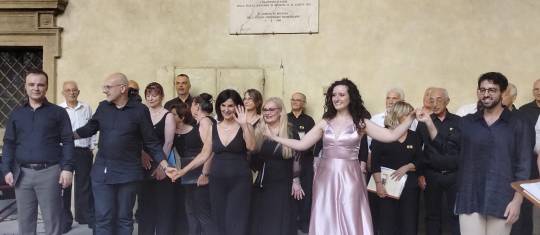
View On WordPress
#Alessandro Granda#Andrea Mongelli#Annalisa Monaco#Anselmo Colzani#arlo Colombara#Arrigo Boito#Aureliano Pertile#Bologna#Budrio#Carlo Colombara#Claudia Marchi#Corale Quadrivium#Corale Vincenzo Bellini#Dave Monaco#Ferruccio Mazzoli#Filippo Giovagnorio#Franco Bordoni#Franco Ghione#Fulvio Massa#Gaetano Donizetti#Giacomo Puccini#Gioachino Rossini#Giuseppe Manacchini#Giuseppe Verdi#I Lombardi alla Prima Crociata#Il Barbiere di Siviglia#L&039;Elisir d&039;amore#La forza del destino#La traviata#Lina Pagliughi
0 notes
Text
Tenor peruano, Juan Diego Florez.




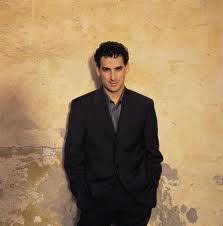

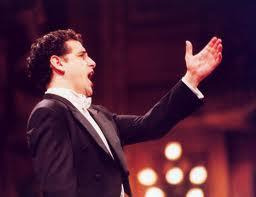

JUAN DIEGO FLÓREZ SALOM ...
Juan Diego Flórez Salom (nascido em 13 de janeiro de 1973) é um peruano de ópera tenor , particularmente conhecido por seus papéis em bel canto óperas. Em 4 de junho de 2007, ele recebeu a mais alta condecoração do seu país, a Gran Cruz de la Orden del Sol del Perú . [Juan Diego Flórez nasceu em Lima , Peru , em 13 de janeiro de 1973, onde seu pai, Rubén Flórez, foi um notável guitarrista e vocalista do popular e do Peru Criolla música. Em uma entrevista ao jornal peruano Ojo , Flórez contou seus primeiros dias, quando sua mãe conseguiu um pub com música ao vivo e trabalhou como cantor de substituição sempre que a atração principal ficou doente. "Foi uma grande experiência para mim, pois a maioria dos que foram regulares no pub eram de uma certa idade, então eu tinha que estar pronto para cantar qualquer coisa de Huaynos de Elvis Presley da música e, na minha mente, que me serviu um grande negócio, porque, em última análise, qualquer música que é bem estruturado, se é jazz, ópera, ou pop-é boa música ". Inicialmente, a intenção de seguir uma carreira na música popular, ele entrou no Conservatório Nacional de Música, em Lima, com a idade de 17 anos. Sua voz clássica surgiu no decorrer de seus estudos sob Maestro Andrés de Santa María . Durante este tempo, ele tornou-se membro do Coro Nacional do Peru e cantou como solista em Mozart 's Coronation Mass e Rossini 's Petite Messe solennelle .
Ele recebeu uma bolsa de estudos para o Instituto Curtis na Filadélfia , onde estudou 1993-1996 e começou a cantar na ópera estudante produções no repertório, que ainda hoje é a sua especialidade, Rossini e as bel canto óperas de Bellini e Donizetti . Durante este período, ele também estudou com Marilyn Horne na Academia de Música do Oeste em Santa Barbara. Em 1994, o tenor peruano Ernesto Palacio convidou-o para a Itália para trabalhar em uma gravação de Vicente Martín y Soler da ópera Il Tutore Burlato . Em seguida, ele se tornou professor de Flórez, mentor e gestor e teve uma profunda influência na sua carreira.
Este artigo está desatualizado . favor atualizar este artigo para refletir eventos recentes ou novas informações disponíveis. (Abril de 2011)
Primeiro avanço do Flórez e estréia profissional aconteceu em 1996, no Festival Rossini na cidade italiana de Pesaro, cidade natal de Rossini. Na idade de 23 anos, ele entrou em cena para interpretar o papel principal tenor em Matilde di Shabran quando Bruce Ford ficou doente. Ele fez sua estréia no La Scala , no mesmo ano como o Chevalier danois (Danish Knight) em Gluck 's Armide , e no final do ano ele cantou o papel de Georges em Meyerbeer 's L'étoile du nord com Wexford Festival Opera . Sua Covent Garden estreia seguido, em 1997, onde cantou o papel do Conde Potoski em um mundo de desempenho de Donizetti concerto estréia Elisabetta . Estréias seguidas na Ópera Estatal de Viena , em 1999, como o Conde Almaviva em Il Barbiere di Siviglia e no New York Metropolitan Opera em 2002, novamente como o Conde Almaviva. Em 20 de fevereiro de 2007, a noite de Donizetti abertura La fille du Regiment no La Scala , Flórez quebrou 74 anos de idade tradição de não encores do teatro, quando ele repetiu "Ah mes amis" com seus nove alta C está seguindo uma "esmagadora "ovação da platéia. Ele repetiu esse bis individual no Metropolitan Opera House de Nova York em 21 de abril de 2008, o primeiro cantor a fazê-lo a partir de 1994.
Flórez também atua nos palcos da Europa, América do Norte e América do Sul. Entre os muitos locais em que ele deu concertos e recitais são o Wigmore Hall , em Londres, o Théâtre des Champs-Élysées , em Paris, Lincoln Center e no Carnegie Hall , em Nova York, o Palau de la Música em Barcelona ???O Teatro Segura em Lima , eo Mozarteum , em Salzburgo. Em uma partida de seu repertório habitual, ele cantou "Você nunca andará sozinho" da Broadway musical Carousel no Berlin Live 8 concerto em 2005.
Ele foi assinado pela Decca em 2001 e desde então lançou seis CDs individuais recital na etiqueta Decca: Rossini Arias , que ganhou o Cannes Classical Award 2003; Una furtiva lágrima , que ganhou o Cannes Classical Award 2004; Grandes Arias Tenor que ganhou o 2005 Eco Klassik prêmio para as melhores árias e duetos considerando; Sentimiento Latino ; Arias para Rubini e, mais recentemente, Bel Canto Espetacular . Sua gravação mais recente é Gluck 's Orphée et Eurydice , gravado ao vivo em maio de 2008. Além de sua discografia oficial, quase todos seus papéis profissionalmente realizados foram preservados em emissoras de rádio, e muitos também pela televisão.
Flórez tem um tenor leggiero voz de excepcional beleza que, embora não seja de grande tamanho, [ carece de fontes ] , no entanto, é audível, mesmo nas maiores casas devido à predominância de altas freuências em sua estrutura harmônica. (carece de fontes???) Sua bússola é duas oitavas , até e inclusive o alto mi bemol ( Zelmira de 2009, em performance ao vivo, também em CD em uma ária de Bellini - "Tudo udir de padre afflitto", no CD Arias para Rubini ), a maior parte da sua gama sendo particularmente forte e brilhante, com quase nenhuma sensação de esforço, enquanto as notas mais baixas são comparativamente mais fraco. (carece de fontes)??? A cabeça e o peito registros estão perfeitamente integrados, sem pausa audível no PASSAGIO . [Seu controle da respiração é impecável, permitindo as frases mais longas para ser sustentada com aparente facilidade. ( carece de fontes ) Os ornamentos do bel canto , incluindo o trinado , são bem executados, e os erros estilísticos, tais como intrusivas aspirados geralmente evitavam. Talvez a realização técnica mais marcante é o cantor de domínio de coloratura ouvido para melhor efeito em seu Idreno ( Semiramide ) e Corradino ( Matilde di Shabran ). [ 10 ]
[ editar ] Prémios e distinções
Juan Diego Flórez foi reconhecido por seu país natal com vários prémios e distinções. Em maio de 2004, ele recebeu o Orden al Mérito Cultural de Lima , do prefeito de Lima, a Orden al Mérito POR distinguidos servicios en el grado de Gran Cruz do presidente Alejandro Toledo, e foi nomeado professor honorário de Martín de Porres Universidade de San . Em 4 de junho de 2007, ele recebeu a maior honra de seu país, a Gran Cruz de la Orden El Sol del Peru , do presidente Alan García.
Flórez também apareceu no 2 - sol selo, parte de uma série de cinco selos homenageando músicos peruanos contemporâneos emitidas em 29 de novembro de 2004. É muito raro para uma cantora de ópera viva ter sido homenageado em seu país natal desta forma, especialmente alguém tão jovem. (Flórez foi de 31 na época). (O retrato de Flórez usada no selo foi pelo fotógrafo britânico, Trevor Leighton, e também foi usada para a capa de seu CD 2003 Una Furtiva Lagrima ).


Do mundo da música clássica, ele recebeu o Premio Abbiati 2000 (atribuído pelos críticos italianos para o melhor cantor do ano), o Rossini d'oro , o Bellini d'oro , o Premio Aureliano Pertile , o Prêmio Tamagno , eo L 'Opera prêmio (Migliore Tenore) por seu desempenho de 2001, em La sonnambula no La Scala.
Em 2009, Flórez foi nomeado para a Melhor Performance Vocal Clássica nas 52 prêmios Grammy por seu álbum, Bel Canto Spectacular (Decca). Vida pessoal.
Flórez casado, nascido na Alemanha australiano Julia Trappe em uma cerimônia civil privada em 23 de abril de 2007, em Viena. Eles realizaram uma cerimônia religiosa na Catedral Basílica, em Lima no dia 5 de abril de 2008, que algumas das maiores celebridades do Peru, incluindo o presidente Alan García e escritor Mario Vargas Llosa , compareceram. Flórez estava presente no nascimento de seu filho, Leandro , que nasceu em 9 de abril de 2011, menos de uma hora antes Flórez subiu ao palco em Le Comte Ory , transmitido ao vivo em todo o mundo a partir do Met. Funções cantadas no palco
1 note
·
View note
Text
Tenors: Franco Corelli, Giacomo Lauri-Volpi, Carlo Bergonzi, Giuseppe di Stefano, Aureliano Pertile, Benamiano Gigli, Tito Schipa, Giovanni Martinelli, Enrico Caruso, Mario del Monaco, Ramon Vinay, Lauritz Melchoir, Flaviano Labo, Helge Rosvaenge, Jan Peerce
Baritones and Basses: Ettore Bastianini, Tito Gobbi, Apollo Granforte, Gino Bechi, Renato Cappechi, Leonard Warren, Giuseppe Taddei, Mattia Battistini, Carlo Tagliabue, Afro Poli, Lawrence Tibett, Tita Ruffo, Paolo Silveri, Cesare Siepi, Ezio Pinza, George London, Boris Christoff, Hans Hotter, Feodor Chaliapin, Gottlob Frick
Sopranos & Mezzos: Renata Tebaldi, Maria Callas, Leontyne Price, Bidu Sayao, Birgit Nilsson, Gianna d’Angelo, Rosa Ponselle, Anna Roselle, Licia Albanese, Kirsten Flagstad, Lotte Lehmann, Anna Moffo, Leyla Gencer, Ebe Stignani, Giulietta Simionato, Fedora Barbieri, Shirley Verrett, Antonietta Stella, Zinka Milanov, Rise Stevens, Fiorenza Cossoto, Elena Obraztsova, Victoria de Los Angeles,
7 notes
·
View notes
Text
0 notes
Text
January 11 in Music History
1642 Birth of German organist and composer Johann Friedrich Alberti in Tönning,
1650 Death of composer Paul Hallman, at 49.
1703 Birth of composer Columban Praelisauer.
1727 Birth of composer Franz Sebastian Haindl.
1746 Birth of Czech composer Frantisek Adam Mica.
1750 Birth of composer Johann Jakob Walder
1763 Death of Italian composer Giovanni Benedetto Platti in Würzburg, Germany.
1800 Birth of soprano Claudine Ronzi de Begnis in Paris.
1801 Death of Italian composer Domenico Cimarosa, in Venice at age 51.
1801 Birth of composer John Lodge Ellerton.
1813 Death of castrato Giuseppe Aprile.
1837 Death of Irish pianist and composer John Field in Moscow, on tour.
1843 Death of Francis Scott Key, composer of Star Spangled Banner, at age 63.
1856 Birth of Norwegian composer Christian Sinding in Kongsberg, Norway.
1859 Birth of baritone Francisco D'Andrade in Lisbon.
1868 Birth of soprano Charlotte Wyns in France.
1869 Birth of soprano Berta Foerstrova-Lauterova in Prague.
1872 Birth of composer Paul Graener.
1875 Birth of Russian composer Reinhold Gliere in Kiev, Ukraine.
1877 Death of composer Pietro Romani, at age 85.
1880 Birth of pianist and composer Rudolf T. Palm in Curacao.
1883 Birth of baritone Giuseppe Danise in Naples.
1885 Birth of German composer Heinrich Sthamer in Hamburg.
1893 Birth of bass Tancredi Pasero in Turin.
1894 Birth of composer Jaroslav Vogel.
1895 FP of Johannes Brahms's Clarinet Sonata, Op. 120, no. 1. Richard Muhlfeld, clarinet and Brahms at piano, in Vienna.
1898 Death of Italian composer Gaetano Capocci, at 86.
1901 Death of Russian composer Vasily Sergeyevich Kalinnikov, in Yalta at age 34.
1902 Birth of French organist and composer Maurice Durufle in Louviers.
1905 Birth of soprano Helena Bartosova-Schutzova in Budapest.
1906 Birth of Gwendolyn Koldofsky.
1906 Birth of composer Johannes Paul Thilman.
1909 Birth of composer Gunnar Johnsen Berg.
1910 Birth of American conductor Izler Solomon in St. Paul, MN.
1918 Birth of American composer Albert Weisser.
1925 FP of Aaron Copland's Symphony for Organ and Orchestra, at Aeolian Hall in NYC. New York Symphony, Walter Damrosch conducting. Nadia Boulanger was the soloist.
1926 Birth of British conductor Alexander Gibson.
1928 Birth of soprano Andrea Guiot in Nimes.
1929 Birth of Polish violinist Wanda Wilkomirsaka in Warsaw.
1929 Death of Swedish composer Elfrida Andrée in Gothenberg.
1930 Death of baritone Francesco Maria Bonini.
1931 Birth of American composer M. L. Daniels.
1934 Debut of German born American soprano Lotte Lehmann, at the MET Opera in NYC.
1935 Death of soprano Marcella Sembrich.
1938 Birth of tenor Maurice Maievsky in Paris.
1940 Birth of American composer Mark DeVoto.
1940 FP of Prokofiev's ballet Romeo and Juliet
1943 Birth of American composer William Albert Penn.
1944 Birth of German composer York Holler in Leverkusen.
1946 USAmerican citizenship granted to German composer Paul Hindemith.
1952 Death of tenor Aureliano Pertile.
1954 Death of Austrian composer Oscar Strauss, in Bad Ischl at 83.
1955 Death of tenor Leon-Pierre Campagnola.
1956 Death of baritone Percy Heming.
1958 Death of mezzo-soprano Emmi Leisner.
1958 Death of composer Alec Rowley, at age 65.
1961 Death of mezzo-soprano Elena Gerhardt.
1962 Birth of American composer Alex Shapiro in NYC.
1968 Death of baritone Mariano Stabile.
1968 FP of Rodeon Shchedrin's Chimes, by the New York Philharmonic.
1973 Death of composer Rudolf Kubin, a day after his 64th birthday.
1973 Death of Dutch composer Emmy Frensel Wegener in Laren.
1976 FP of Stephen Sondheim's Pacific Overtures in NYC.
1984 Death of composer Fritz Geissler, at 62.
1989 Death of tenor Einar Andersson.
1992 FP of John Harbison's song The Flute of Interior Time with text by Kabir, as translated by Robert Bly. William Parker, baritone and Allan Marks, piano at the Schauspielhaus in Berlin . The song became part of The Aids-Quilt Songbook of William Parker.
1997 FP of Hans Werner Henze's opera Venus and Adonis by the Bavarian State Opera, in Munich.
1998 Death of conductor Klaus Tennstedt, at 71.
2000 Death of American composer Barney Childs in Redlands, CA.
2001 FP in USAmerica of John Adams' oratorio El Niño with Kent Nagano conducting the San Francisco Symphony and Chorus, the Piedmont Children's Choir. FP at Théâtre du Chatelet in Paris on 15 DEC 2000.
2005 Death of Australian composer Miriam Hyde in Sydney.
11 notes
·
View notes
Text
Lessi di un episodio avvenuto al Caffè Florian di Venezia, non so in quale anno del boom economico. Un giovane direttore d’orchestra che avrebbe fatto una bella carriera incontrò, per caso. un corpulento signore oltre la settantina, dalla chioma bianca un poco scapigliata. Esuberante, raccontò di essere non solo un famoso tenore ma anche il rivale di Enrico Caruso al Metropolitan di New York. Disse di aver cantato con Arturo Toscanini.
“Ah, ah, ah! Lei lo conosce?» chiese il direttore d’orchestra al critico musicale che raccontava il fatto su una rivista, non ricordo se questi fosse Rodolfo Celletti o Giorgio Gualerzi.
«Ha detto che il suo nome è Giovanni Martinelli”, mettendo implicitamente in dubbio la veridicità delle parole. Insomma un fanfarone da caffè di lusso.
Il signore «canuto» aveva raccontato, né più né meno, la verità.
Tenore lirico-spinto, gli americani consideravano Giovanni Martinelli l’erede del grande cantante napoletano, uno dei protagonisti della Golden Age del Metropolitan. Nacque nel 1885 a Montagnana, vicino a Padova, città assai fortunata quanto a tenori, poiché diciotto giorni dopo la nascita di Martinelli nacque Aureliano Pertile.
La cosa paradossale di questo episodio fu che, narrando la verità, il celebre tenore passò per un pittoresco racconta frottole. Come non sapere chi fosse Giovanni Martinelli?
Sic transit gloria mundi.
Andando al Circolo Lirico Bolognese, soprattutto quando era nella sede di Palazzo Tanari vicino a casa mia, si incontrava una certa varietà di innocui gradassi. Spesso tenori che, a detta loro, avevano tutti voce da tenori spinti o drammatici. I ruoli erano Pollione, Manrico, Alvaro, Andrea Chenier, Turiddu, Canio, Calaf e Otello. A proprio dire, possedevano voci migliori sia di Franco Corelli che di Mario del Monaco. Le rare ed ovviamente deludenti esibizioni al Circolo Lirico si concludevano con complimenti sperticati davanti ma, dietro le spalle, tutti li derivano. Macchiette non completamente innocue.
Nell’ambito dell’opera, in pochi anni, ho conosciuto tre millantatori con i fiocchi, un soprano bolognese, un altro ferrarese e un tenore statunitense. Millantatori che costruirono le prove per dare veridicità alle menzogne.
Conobbi la prima millantatrice, quella bolognese, attraverso un vicino di classe del liceo con il quale non mi ero più visto da prima della mia Maturità. Era il 1977.
Entrambi collezionavamo dischi e opere dal vivo ma avevamo gusti musicali differenti: io ascoltavo dalla musica del romanticismo fino a quella contemporanea, Tullio si arrestava alla musica romantica. Adoravamo entrambi tre soprani, Magda Olivero, Montserrat Caballè e Joan Sutherland. Tullio, a differenza di me, non sopportava Maria Callas perché la sua voce ballava e gli acuti erano strillati.
Magda Olivero
Montserrat Caballé
Joan Sutherland
Maria Callas
Da quella conversazione uscì fuori che tutti e due cantavamo in casa sopra ai dischi come i matti del Circolo Lirico. Io tenore, lui basso.
Quando Tullio sentì questo gli si illuminarono gli occhi. Mi raccontò che faceva divulgazione lirica: essendo la madre maestra, Tullio cantava davanti agli bambini, mimando l’azione con costumi e qualche semplice oggetto di scena. Allevava una nuova generazione di frequentatori del melodramma. Non solo si esibiva personalmente ma aiutava la madre nello spiegare le opere ai bambini prima di accompagnarli alle spettacoli che il Teatro Comunale riservate alle scuole. L’ultima opera che i bambini avevano visto al Teatro Comunale fu Il Signor Bruschino diretto da Donato Renzetti, e tra i cantanti c’erano Saverio Durante, Silvia Baleani, Franco Federici e l’amico Floro Ferrari. Già in quegli anni si rilevava una crisi delle vocazioni liriche tra i giovani e tutto questo mi parve una piccola attività degna di qualche interesse.
Tullio, però, aveva in mente qualcos’altro. Quasi fosse un impresario, pensava di allestire una breve stagione lirica da rappresentare nella classe della madre: di lì a poco avrebbe messo in scena La Serva Padrona di Pergolesi. Era quasi pronta, aveva terminato le prove con il soprano, a suo dire molto bravo e con una voce bellissima. Una semiprofessionista. A Tullio mancava qualcuno che facesse Vespone, ruolo da mimo. E dopo l’opera di Pergolesi sarebbe venuto L’elisir d’amore. Per questa non aveva ancora trovato il tenore per il gravoso ruolo di Nemorino.
«Tu tenore? Splendido, ti scritturo. Puoi fare sia l’uno che l’altro».
Questa proposta non mi entusiasmò perché ben conoscevo la mia scarsa propensione ad apparire davanti al pubblico, seppur costituito da «cinni» delle elementari. Io ero un cantante che si esibiva in stanza da bagno, mica in una sala da concerto!
E poi, se adoravo L’Elisir d’amore, La Serva Padrona mi faceva addormentare. Tutt’ora con questo intermezzo mi faccio dei bei sonnellini.
La mia risposta fu, dunque, «no».
Ma Tullio non mollò. Ci eravamo, infatti, scambiati il numero di telefono, e il giorno dopo mi telefonò: mi invitò a casa sua per due chiacchiere, qualcosa da mangiare, per vedere la sua collezione di nastri, ascoltare po’ di musica. Infine per presentarmi Evelina, il soprano.
E andai.
Ascoltammo nastri, dischi e poi venne il turno di una registrazione di Evelina.
Ascoltammo È strano, Ah forse è lui, Sempre libera degg’io, un bel biglietto di presentazione.
Il brano aveva l’accompagnamento orchestrale. Tullio mi raccontò che il ragazzo di Evelina, caballeiano a trecentosessanta gradi, aveva trovato la base orchestrale dall’edizione completa diretta da Georges Prêtre senza, appunto, Montserrat Caballé.
Il soprano Evelina aveva una voce di timbro molto gradevole, ben emessa, agilità perfette e sciolte. Forse solo un po’ fredda come interprete, se proprio si voleva cavillare qualcosa. Non potetti che dire belle parole e, soprattutto, sincere.
«Accidenti…che brava. Sai una cosa? Mi ricorda la voce di Anna Moffo».
Nella registrazione di Evelina c’era anche il tenore fuori scena:
«È il maestro di Evelina, R.A., un tenore del coro del Comunale», mi spiegò il solerte ospite.
«Evelina canta a teatro?»
«No, è al secondo anno di architettura»
«Come l’hai conosciuta?»
«Ė la ragazza di un mio amico. Insegnano catechismo nella stessa Parrocchia»
«Ha fatto audizioni presso agenzie o teatri?»
«Per ora i genitori non hanno piacere e vogliono che prima si laurei»
Suonò il campanello e Tullio, con uno sguardo che dimostrava di essere al settimo cielo, portò Evelina in salotto a braccetto.
La voce aveva evocato altre fisionomie e un altro modo di essere.
La Diva indossava una pelliccia di lince ottenuta da animali in peluche. Magra, bassa ma con tacchi a spillo, portava dei jeans attillatissimi per metter in mostra il sedere. Mora corvina, una frangia leggermente crespa arrivava oltre le sopracciglia. Il volto terminava con un mento a punta, il naso aquilino spuntava da due zigomi sporgenti, labbra sottili, occhi scuri vivaci leggermente ravvicinati. Non era bella ma, come si dice, «un tipo».
Evelina aveva un carattere estroverso, rideva fragorosamente e con facilità. Parlava starnazzando con la pesante cadenza delle mie parti e poi le essce, le szeta, le tci bolognesi, che avrebbero decimato eleganza e fascino perfino a Grace Kelly.
(Continua)
Tre millantatori all’Opera – Il soprano bolognese (Parte prima) Lessi di un episodio avvenuto al Caffè Florian di Venezia, non so in quale anno del boom economico.
#Anna Moffo#Arturo Toscanini#Bologna#Donato Renzetti#Franco Corelli#Georges Prêtre#Giovan Battista Pergolesi#Giovanni Martinelli#Grace Kelly#Il Signor Bruschino#Joan Sutherland#L&039;Elisir d&039;amore#La Serva Padrona#Magda Olivero#Mario del Monaco#Montserrat Caballé#Palazzo Tanari
0 notes
Text


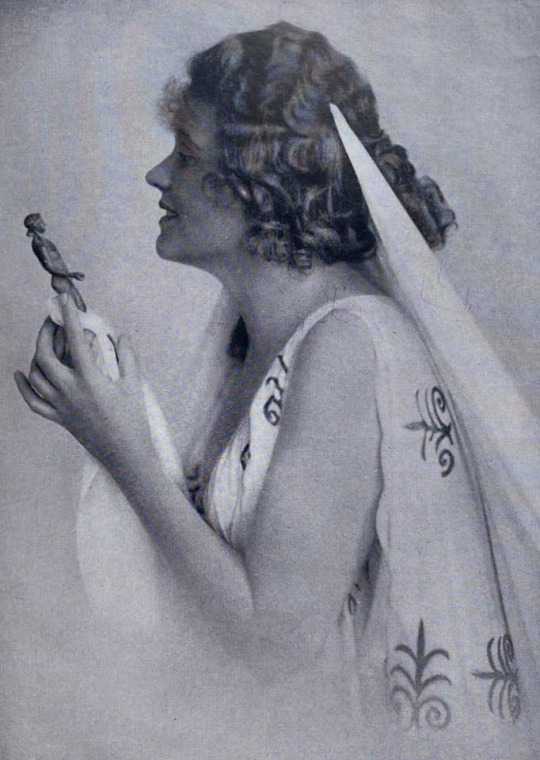
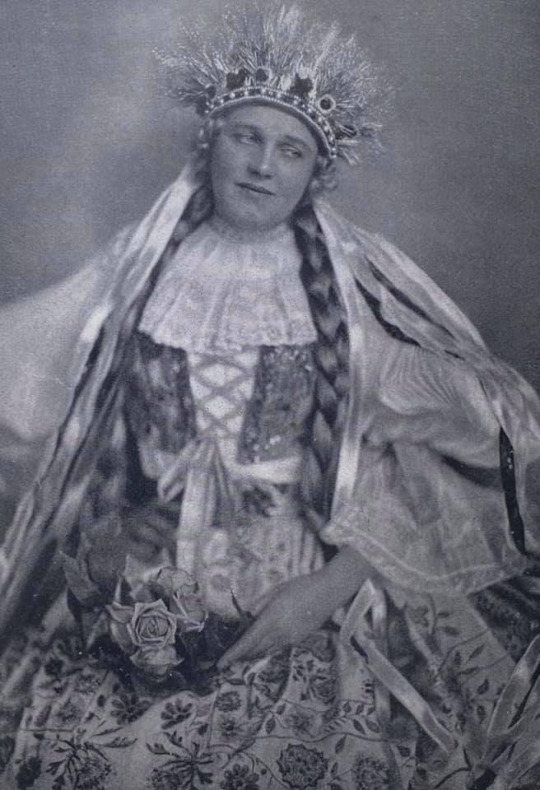
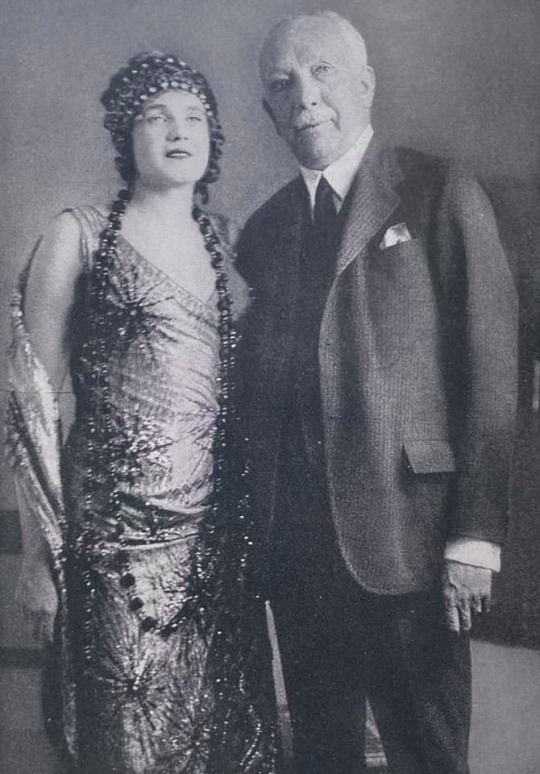
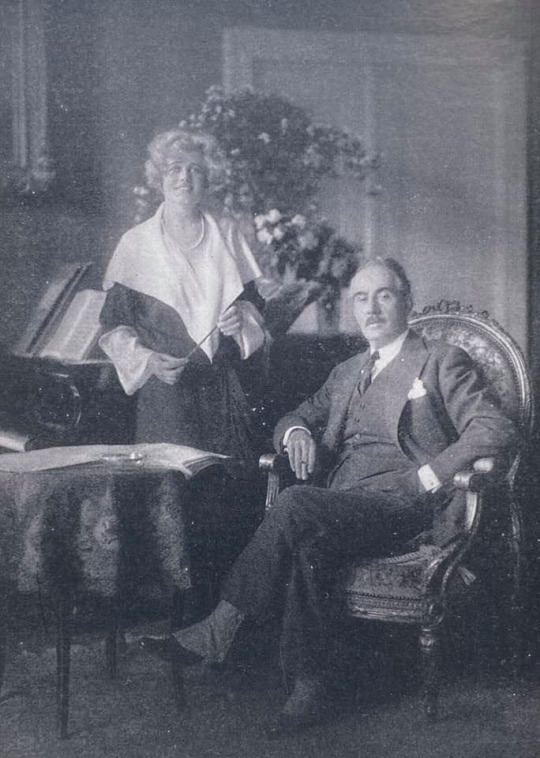

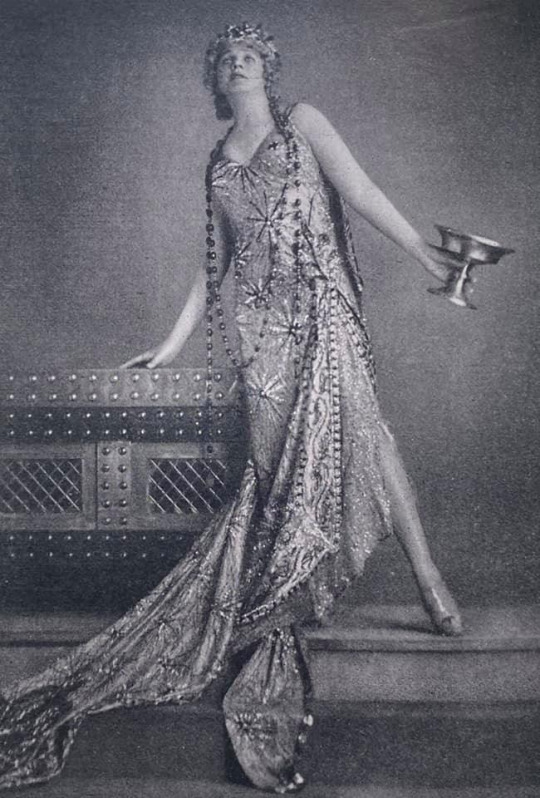

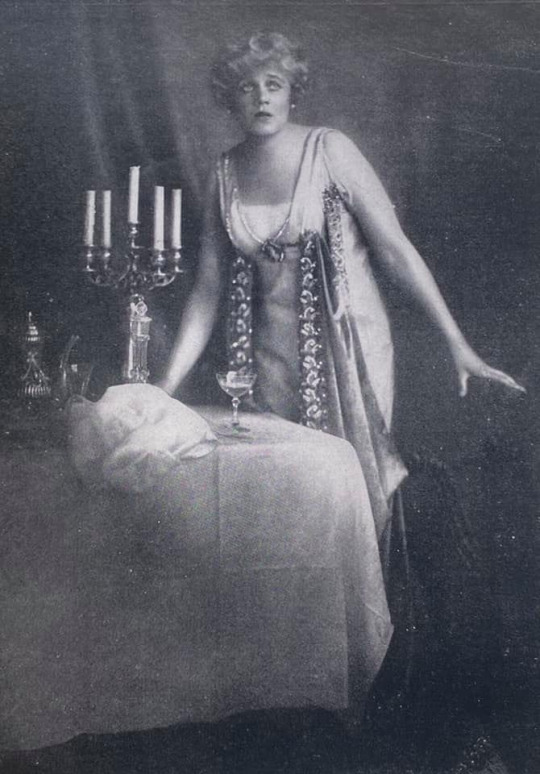
The flamboyant soprano Maria Jeritza, born in Moravia, made her early career primarily in Vienna, where her exceptional beauty, silvery spinto-weight voice and flair for dramatic (not to say sensational) stage action made her a star of the first magnitude. Baptized Mimi Jedlitzková and later calling herself Marie Jedlitzka, she sang a wide repertory and participated in the premieres of several important operas. Her glamorous presence was as welcome at the Metropolitan Opera as it was in Europe and she became a leading artist there in the 1920s.Surprising though it may seem, given her later theatrics, Jeritza was a very shy child. Beginning her studies at the age of 12, she entered the Brünn Musikschule. At 14, she undertook private lessons from Professor Auspitzer, with whom she remained for several years. Although urged by Auspitzer to audition for a position with a number of regional opera houses, Jeritza refused, too terrified to sing before an audience of any size. Her teacher, therefore, devised a ruse, asking her one day simply to sing through some arias. When she finished, the director of the Olmütz Opera appeared from behind some draperies and informed the startled young soprano that he wished to engage her.Jeritza's Olmütz debut as Elsa in Lohengrin saw the start of a rapid rise in confidence and dramatic savvy. Less than half a year later, she traveled to Vienna to audition for the Volksoper. Singing but a few measures, she was informed that she would be hired. Two seasons at the Volksoper led to guest engagements elsewhere and an appointment to Vienna's Court Opera, especially at the request of Emperor Franz Joseph. Meanwhile, she had created the title role in Stuttgart of Richard Strauss' Ariadne auf Naxos, thus beginning her long-term relationship with the composer who would give her yet another spectacular role, that of the Empress in Die Frau ohne Schatten in its 1919 premiere in Vienna. In both Frau and in the 1916 premiere of the revised Ariadne in Vienna, Jeritza was paired with soprano Lotte Lehmann. Jeritza also created the role of Janácek's Jenufa for Vienna, as she was later to do for New York.Another highly publicized Jeritza creation was the role of Marietta in Erich Korngold's Die Tote Stadt, premiered in Hamburg in 1920 and repeated in New York the following year. This role, in fact, provided the vehicle for Jeritza's Metropolitan debut. During this time, the soprano also achieved renown for her interpretations of Puccini heroines. Her imperious Turandot was hailed as a major accomplishment and her not-quite vulnerable Tosca became exceedingly famous, not least for her singing "Vissi d'arte" from a prone position. Tenor Aureliano Pertile, celebrated in his native Italy as the best of the dramatic tenors, had the misfortune to make his debut opposite Jeritza's first Metropolitan Tosca. Jeritza received what, according to Met manager Giulio Gatti-Casazza's recollection, was the greatest response he had ever witnessed in a theatre. Pertile was all but ignored.Jeritza's successes embraced a wide range of roles, all of them interesting, if sometimes misconceived. Her Octavian in Rosenkavalier was both stunningly handsome and handsomely sung. Her Minnie, Thaïs, Salome, Fedora, and Ägyptische Helena (which she premiered at the Met) were creatures of unending fascination. Although Jeritza left the Met during the Depression years when pay cuts were mandated, she continued to enthrall audiences in Europe throughout the 1930s.
#Maria Jeritza#Metropolitan Opera#Carl Maria von Weber#Der Freischütz#richard wagner#Lohengrin#Die Walküre#Tristan und Isolde#Amilcare Ponchielli#La Gioconda#Cavalleria rusticana#Pietro Mascagni#Tosca#Giacomo Puccini#Richard Strauss#Turandot#Jules Massenet#Thaïs#Carmen#Georges Bizet
4 notes
·
View notes
Video
youtube
“Da voi lontan” (”In fernem Land”) (Gralserzählung)
Richard Wagner, Lohengrin
Aureliano Pertile
Da voi lontan, in sconosciuta terra
Havvi un castel, che ha nome Monsalvato;
Là un sacro tempio una foresta serra,
Di gemme senza pari e d'oro ornato.
Ivi una coppa, che del cielo è dono,
Guardata è qual reliquia del Signor,
A lor che di virtù campioni sono,
Un angiol la portò sull'ali d'or!
Ogni anno una colomba vien dal cielo
A rinnovare il santo suo poter!
Essa è il San Graal, e forza e santo zelo
Infonde in seno dei suoi cavalier.
Chi del San Graal è a cavalier eletto,
Munito è di potere suvruman;
Inerte è contro lui l'inganno abbietto,
Di ucciderlo si attenta ognun invan!
E se mandato egli è in lontana terra
L'onore e la virtude a sostener,
Ei resta vincitore in ogni guerra
Poichè lo scorta un magico poter!
Però, del Graal chi scopre il velo arcano
Dal guardo dei profani de' fuggir!!!
Apparve a voi cotal segreto strano;
Tosto degg'io partir!
Di voi, prodi, or si dia risposta degna:
Del Graal qui mi traeva il gran voler...
Mio padre, Parsifal, in esso regna,
Son Lohengrin, suo figlio e cavalier!
5 notes
·
View notes
Text
Maria Meneghini-Callas
Aureliano Pertile
Piero Cappuccilli
Elina Garanca (Sara) a Roberto Devereux MET
Crec que el primer contacte amb en Jordifosal va ser en l’apunt preparatori de Il barbiere di Siviglia, és a dir setembre de 2014 i a partir d’aleshores no ha fallat mai, i ja sigui amb comentaris, com en els “m’agrada” que amb la imatge de Gerhaher acompanya quasi diàriament els apunts,
El seu qüestionari aporta nous i interessants noms i una generosa barreja d’èpoques que s’agraeix, espero que ell després l’amplií amb les interessants reflexions que acompanyaven moltes de les respostes.
La primera vegada que vas anar a l’òpera quin any va ser? 23 de febrer de 1979
A quin teatre? Liceu
Quina òpera vas veure? Samson et Dalila
Els teus pares anaven o van a l’òpera? Si
Quin compositor operístic t’estimes més? Verdi
Quina és l’aspecte que valores més d’una representació operística? Les veus
Quin és el teu tenor predilecte? Aureliano Pertile
Quina és la teva soprano predilecta? Maria Callas
Quin és ell teu baríton predilecte? Piero Cappuccilli
Quina és la teva mezzosoprano predilecta? Elina Garanca
Quin és el teu baix predilecte? Samuel Ramey
Quin és el teatre dels que has visita que més t’ha impressionat? El MET
Podries viure en una ciutat sense teatre d’òpera? Si
Quina és la teva òpera predilecte? Don Carlo o Don Carlos però sempre en 5 actes
Quina òpera detestes? D.Q
Valora de 1 a 10 la importància del director d’escena en una representació operística 7
A quina ciutat del món que no sigui la teva i amb teatre d’òpera, t’agradaria viure? París
Quin és el llibretista operístic preferit? Wagner
Quin és el teu heroi de ficció operística? Posa
Quina és la teva heroïna de ficció operística? Brünnhilde
La gravació operística que t’enduries a l’illa deserta? Aida dirigida per Riccardo Muti amb Caballé, Cossotto, Domingo, Cappuccilli i Ghiaurov
El director d’orquestra operístic preferit? Riccardo Muti
El director d’escena preferit? Harry Kupfer
La representació operística que t’hagués agradat assistir? L’estrena de l’Otello a la Scala
L’òpera barroca que més t’agrada? Orfeo de Monteverdi
L’òpera clàssica que més t’agrada? Le Nozze di Figaro
L’òpera romàtica que més t’agrada? com que ja he dit Don Carlo i és un Verdi, ara un Wagner,, Lohengrin
L’òpera del segle XX que més t’agrada? Salome
L’òpera del segle XXI que més t’agrada? NS NC
Si poguessis escollir una vocalitat lírica, què t’agradaria ser: soprano, mezzosoprano, contralt, tenor, baríton o baix? baix
Us deixo amb la gravació que en Jordifosal s’enduria a l’illa deserta, l’Aida d’estudi de Riccardo Muti
Gràcies Jordi per aportar noves variants
La setmana vinent tindrem el qüestionari de Antonio Fuentes
EL QÜESTIONARI IFL DE JORDIFOSAL Crec que el primer contacte amb en Jordifosal va ser en l'apunt preparatori de Il barbiere di Siviglia, és a dir setembre de 2014 i a partir d'aleshores no ha fallat mai, i ja sigui amb comentaris, com en els "m'agrada" que amb la imatge de Gerhaher acompanya quasi diàriament els apunts,
#Aida#Aureliano Pertile#El Qüestionari IFL#Elina Garanča#Maria Callas#Piero Cappuccilli#Riccardio Muti#Samuel Ramey
0 notes
Video
AURELIANO PERTILE-MARGARET SHERIDAN--TU, TU, AMORE? TU? --MANON LESCAUT
(by jacquesurlus)
3 notes
·
View notes
Photo

Maria Jeritza (6 October 1887 – 10 July 1982) was a Czech soprano singer,long associated with the Vienna State Opera (1912–1935) and the Metropolitan Opera (1921–1932 and 1951). Her rapid rise to fame, beauty and personality earned her the nickname "The Moravian Thunderbolt".
The flamboyant soprano Maria Jeritza, born in Moravia, made her early career primarily in Vienna, where her exceptional beauty, silvery spinto-weight voice and flair for dramatic (not to say sensational) stage action made her a star of the first magnitude. Baptized Mimi Jedlitzková and later calling herself Marie Jedlitzka, she sang a wide repertory and participated in the premieres of several important operas. Her glamorous presence was as welcome at the Metropolitan Opera as it was in Europe and she became a leading artist there in the 1920s. Surprising though it may seem, given her later theatrics, Jeritza was a very shy child. Beginning her studies at the age of 12, she entered the Brünn Musikschule. At 14, she undertook private lessons from Professor Auspitzer, with whom she remained for several years. Although urged by Auspitzer to audition for a position with a number of regional opera houses, Jeritza refused, too terrified to sing before an audience of any size. Her teacher, therefore, devised a ruse, asking her one day simply to sing through some arias. When she finished, the director of the Olmütz Opera appeared from behind some draperies and informed the startled young soprano that he wished to engage her. Jeritza's Olmütz debut as Elsa in Lohengrin saw the start of a rapid rise in confidence and dramatic savvy. Less than half a year later, she traveled to Vienna to audition for the Volksoper. Singing but a few measures, she was informed that she would be hired. Two seasons at the Volksoper led to guest engagements elsewhere and an appointment to Vienna's Court Opera, especially at the request of Emperor Franz Joseph. Meanwhile, she had created the title role in Stuttgart of Richard Strauss' Ariadne auf Naxos, thus beginning her long-term relationship with the composer who would give her yet another spectacular role, that of the Empress in Die Frau ohne Schatten in its 1919 premiere in Vienna. In both Frau and in the 1916 premiere of the revised Ariadne in Vienna, Jeritza was paired with soprano Lotte Lehmann. Jeritza also created the role of Janácek's Jenufa for Vienna, as she was later to do for New York.Another highly publicized Jeritza creation was the role of Marietta in Erich Korngold's Die Tote Stadt, premiered in Hamburg in 1920 and repeated in New York the following year. This role, in fact, provided the vehicle for Jeritza's Metropolitan debut. During this time, the soprano also achieved renown for her interpretations of Puccini heroines. Her imperious Turandot was hailed as a major accomplishment and her not-quite vulnerable Tosca became exceedingly famous, not least for her singing "Vissi d'arte" from a prone position. Tenor Aureliano Pertile, celebrated in his native Italy as the best of the dramatic tenors, had the misfortune to make his debut opposite Jeritza's first Metropolitan Tosca. Jeritza received what, according to Met manager Giulio Gatti-Casazza's recollection, was the greatest response he had ever witnessed in a theatre. Pertile was all but ignored. Jeritza's successes embraced a wide range of roles, all of them interesting, if sometimes misconceived. Her Octavian in Rosenkavalier was both stunningly handsome and handsomely sung. Her Minnie, Thaïs, Salome, Fedora, and Ägyptische Helena (which she premiered at the Met) were creatures of unending fascination. Although Jeritza left the Met during the Depression years when pay cuts were mandated, she continued to enthrall audiences in Europe throughout the 1930s.
3 notes
·
View notes
Photo

Ada Sari (29 June 1886 – 12 July 1968) was a Polish opera singer, actress, and educator. One of the leading coloratura sopranos of her generation, she possessed a large, resonant voice with a clear timbre. Her career took her to the stages of the best opera houses and concert halls in Europe during the first half of the 20th century. Her signature roles included Gilda in Rigoletto, Mimi in La bohème, Rosina in The Barber of Seville, Violetta in La traviata, and the title roles in Lakmé and Lucia di Lammermoor. Sari enjoyed a great deal of popularity among audiences and critics and she was dubbed "The Queen of Coloratura" and the "New Patti" by the Italian press. During her career she appeared opposite many famous singers, including Mattia Battistini, Beniamino Gigli, Aureliano Pertile, Titta Ruffo and Tito Schipa to name a just a few. She collaborated with many well known conductors like Sergei Koussevitzky, Tullio Serafin, and Arturo Toscanini. She also appeared in concert with many well-known performers, such as Fritz Kreisler, Wilhelm Backhaus, and Pablo Casals. Born with the name Jadwiga Szayer in Wadowice.Sari made her professional opera debut in 1909 as Marguerite in Charles Gounod's Faust at the Teatro Nazionale in Rome. She spent the next three years appearing at major opera houses in Italy like La Scala, the Teatro Comunale di Bologna, La Fenice and the Teatro della Pergola. Between 1912 and 1914 she had major successes at the Teatro Lirico Giuseppe Verdi, the Teatro Donizetti di Bergamo, the Teatro Dal Verme, the Teatro Regio di Parma, the Teatro del Giglio, the opera house in Brescia and the Teatro di San Carlo. At the later house she was a much admired Berthe in Giacomo Meyerbeer's Le prophète and Arsena in The Gypsy Baron. She also sang Santuzza in Mascagni's Cavalleria rusticana and Nedda in Leoncavallo's Pagliacci under the batons of their respective composers in Alexandria. In early 1914 Sari gave a highly lauded portrayal of the title heroine in Jules Massenet's Thaïs at the Great Theatre, Warsaw. She also appeared at that house as Tamara in Anton Rubinstein's The Demon with Mattia Battistini in the title role. In the spring of 1914 Sari embarked on a lengthy concert tour of Russia with a group of Italian singers which included extended stays in Moscow and Saint Petersburg for opera performances at the Mariinsky and Bolshoi Theatres. The tour, which originated in Warsaw, also stopped for performances in Lemberg, Kiev, and Kraków. After World War I ended, Sari performed a lot in South America, especially since 1918 at the Teatro Colón in Buenos Aires. In 1921 she undertook a concert tour throughout North America, which included appearances at Carnegie Hall in New York and the Auditorium Building of Roosevelt University in Chicago. Toscanini invited her to portray the Queen of the Night in The Magic Flute for the opening of La Scala's 1923–1924 season.
2 notes
·
View notes
Photo

Giacomo Lauri-Volpi (11 December 1892 – 17 March 1979) was an Italian tenor with a lyric-dramatic voice of exceptional range and technical facility. He performed throughout Europe and the Americas in a top-class career that spanned 40 years. Born in Lanuvio, Italy, he was orphaned at the age of 11. After completing his secondary education at the seminary at Albano and graduating from the University of Rome La Sapienza, he began vocal studies under the great 19th-century baritone Antonio Cotogni at the Accademia Nazionale di Santa Cecilia in Rome. His nascent singing career was put on hold, however, by the outbreak of World War I in 1914, during which he served with the Italian armed forces and emerged as one of Italy's most decorated soldiers. The war over, he made a successful operatic debut as Arturo in Bellini's I Puritani in Viterbo, Italy, on 2 September 1919—performing under the name Giacomo Rubini, after Bellini's favorite tenor, Giovanni Battista Rubini. Four months later, on 3 January 1920, he scored another success, at the Teatro Costanzi in Rome, this time performing under his own name opposite Rosina Storchio and Ezio Pinza in Massenet's Manon. Lauri-Volpi was widely acclaimed for his performances at Italy's most celebrated opera house, La Scala, Milan, between the two world wars. A highlight of his Milan seasons occurred in 1929 when he was chosen to sing Arnoldo in La Scala's centenary production of Rossini's Guglielmo Tell. He was also a leading tenor at the New York Metropolitan Opera from 1923 to 1933, appearing there in a total of 307 performances. During this 10-year period he sang opposite Maria Jeritza in the American premiere of Puccini's Turandot and opposite Rosa Ponselle in the Met premiere of Verdi's Luisa Miller. His Met career was terminated prematurely after a dispute with the opera house's management. They wanted him to take a pay cut to help tide the theatre through the economic privations being caused by the Great Depression, but he refused to co-operate and left New York for Italy. Lauri-Volpi's most notable appearances outside Italy also included two seasons at the Royal Opera House, Covent Garden—in 1925 and 1936. By the latter date, he had broadened his repertoire, progressing from lyric roles to more taxing dramatic parts. His voice began to show consequent signs of wear in the 1940s, losing homogeneity. His thrilling top notes remained remarkably intact, however, right through until the 1950s. During the Second World War, Lauri-Volpi was based in Italy and was particularly admired by the country's dictator, Benito Mussolini. His last public performance in a full opera came in 1959, as Manrico, in a production of Verdi's Il Trovatore staged at Rome. Lauri-Volpi recorded a number of opera arias and duets for European and American gramophone companies during the height of his fame. His voice was a brilliant instrument at its zenith: bright, flexible and ringing in tone. He had astonishingly easy and penetrating high notes and possessed a shimmering vibrato which made his voice instantly recognisable both on disc and in the theatre. He sang roles as diverse as Arturo (in Bellini's I Puritani) and Otello (in Verdi's Otello). In the process, he cemented his position as one of the supreme opera singers of the 20th century, even though he faced stiff competition from a remarkable crop of rival Mediterranean tenors during his prime in the 1925-1940 period. (They included Beniamino Gigli, Giovanni Martinelli, Aureliano Pertile, Francesco Merli, Galliano Masini, Tito Schipa, Antonio Cortis and Renato Zanelli—as well as the young Alessandro Ziliani and Giovanni Malipiero.)
3 notes
·
View notes
Photo

Edoardo Garbin (1865-1943) was an Italian lirico-spinto tenor who made a specialty of verismo roles during the late 19th and early 20th centuries. Born to a farming family in Padua, the young Garbin showed musical promise from an early age. He began working with celebrated bass Antonio Selva (creator of Silva in Ernani and Count Walter in Luisa Miller) in the mid-1880s. Following Selva’s death in 1889, Garbin continued his vocal studies with Vittorio Orefice (teacher of Aureliano Pertile), who continued to build the young tenor’s technique. Garbin’s debut occurred on September 6, 1891 at the Teatro Comunale in Vicenza as Don Alvaro in La Forza del Destino. Within four months, Garbin was singing the Duke in Rigoletto at the Teatro San Carlo in Naples and in October of 1892, he was entrusted with the role of Don Fernando Guevara in the world premiere of Franchetti’s much heralded Cristoforo Colombo at Genoa’s Teatro Carlo Felice. Garbin continued his meteoric rise. Less than a year and a half after his debut, he created the role of Fenton in the world premiere of Verdi’s final opera, Falstaff. Was the young tenor really ready to take on such an assignment, though? Verdi, it seems, had his doubts. The great composer had originally tried to secure Angelo Masini for the role of Fenton but had to settle on Garbin when the legendary tenor proved to be unavailable. Verdi coached the role with Garbin for a solid month, during which time the composer fired off a letter to publisher Ricordi, expressing his dissatisfaction. Verdi complained that the tenor was simply not picking up the part quickly enough. The composer stated that Garbin needed, “…a pedant who would teach him notes, tempo and clear words well.” Verdi also complained to Ricordi of Garbin’s habit of spreading his final vowels. “For example,” he wrote, “when he pronounces ‘che gli risponde alla sua parolaaa’, the ‘a’ is so open that his voice changes and seems to be somebody else’s.” Somehow, composer and tenor managed to find the right mutual wavelength and Garbin sang in the opera’s premiere at La Scala on February 9, 1893. Incidentally, the Nanetta to Garbin’s Fenton, Austrian born soprano Adelina Stehle (1860-1945), was to become the tenor’s frequent singing partner, as well as his wife. Garbin built a major career in Italy, but was never invited to sing in North America. In fact, the English-speaking world seemed to have little use for Edoardo Garbin. His one season in London (1908) was a total disaster, with one critic describing his Cavaradossi as “miserable”. Luckily, much of Europe, including Germany, Austria, Russia, Poland, Spain and Portugal (not to mention South America) had a much greater appreciation for the tenor’s talents. His repertoire included leading roles in such works as La Bohème, Tosca, Madama Butterfly, Manon Lescaut, Fedora, Adriana Lecouvreur, Andrea Chénier, Cavalleria Rusticana, Iris, Loreley, Mefistofele, La Gioconda, La Traviata, Rigoletto, Carmen, Manon and Lohengrin. Garbin created the role of Milio Dufresne in the world premiere of Leoncavallo’s Zazà in Milan in November of 1900. He also had the honor of creating four roles in operas which never entered the standard repertoire, Spiro Samara’s Rhea (Florence, 1908), Héllera by Italo Montemezzi (Turin, 1909), Giocondo Fino’s La Festa del Grano (Turin, 1910) and La Dubarry by Ezio Camussi (Milan, 1912). After passing the age of 50, Garbin began to curtail his operatic performances. After a final La Bohème at Florence’s Teatro Pergola in 1918, Garbin left the stage for good. He retired to Brescia, where he passed away in 1943 at the age of 78. Edoardo Garbin’s death marked the end of an era. The tenor was the last surviving male singer to have premiered a Verdi opera. Edoardo Garbin made dozens of recordings between 1902 and 1913 for The Gramophone and Typewriter Company, Fonotipia and Columbia. The tenor runs the gamut from truly stellar to almost hopelessly inept in these discs. Some of Garbin’s recordings reveal careless musicianship (late entrances abound), a dull and colorless timbre (bringing to mind Verdi’s complaint about overly spread vowels) and painfully flat notes. During introductions or between phrases he can frequently be heard coughing or clearing his throat. When he is at his best, however (which is much of the time, to be fair), the tenor offers phrases of vocal and artistic eloquence that are truly breathtaking.
1 note
·
View note
Photo

Identified as Arturo Toscanini's favorite tenor, Aureliano Pertile was both a paradox and a paradigm. Both lauded and excoriated, he was more deserving of praise than censure. His voice, a strong, spinto-weight instrument, could sound growly and suffocated in the lower regions, but the top register was thrilling. His intensity on-stage led some to accuse him of overacting both histrionically and vocally, but his recordings reveal a very present nobility of spirit. Moreover, his attention to binding notes together into an unimpeachable legato placed him among the greats. His recordings of Il Trovatore and Aida, available in excellent remasterings, show him in both lyric and heroic modes and are indispensable. His arias from Andrea Chénier, especially "Un di all'azzurro spazio," are mooted by modern-day conductors such as Riccardo Muti as models of superior singing. After studies in Padua and Milan, Pertile made his 1911 debut at Vincenzo as Lionel in Martha. Other appearances in Italy and South America followed before his debut at La Scala as Paolo in 1916. Unfortunate in the timing of his December 1, 1921, Metropolitan Opera debut, Pertile sang Cavaradossi to the Tosca of another debutante, Maria Jeritza. Jeritza was a sensation and the tenor was all but ignored. After Toscanini's return to La Scala in 1920, however, Pertile enjoyed a 15-year reign as leading tenor there from 1922 to 1937. His colleagues spoke of a man with little personality offstage, but a veritable lion before the public. From 1927 to 1931, Pertile frequently appeared at Covent Garden. Initially, he was recognized for a voice "naturally malleable and powerful, but used with considerable discretion" by Ernest Newman. As both Radames and Manrico, Pertile was enthusiastically received for his fervor and vocal quality. In later season, some negative comments intruded about him being too Italianate in style, although his performances with Rosa Ponselle in his last London season (La forza del destino) were well reviewed. During his La Scala years, Pertile created two Nerones, those of Boito (1924) and Mascagni (1935), and also sang the premiere of Wolf-Ferrari's Sly in 1927. He sang in Buenos Aires between 1923 and 1929. After his retirement in 1946, Pertile taught at the Conservatory in Milan.
0 notes